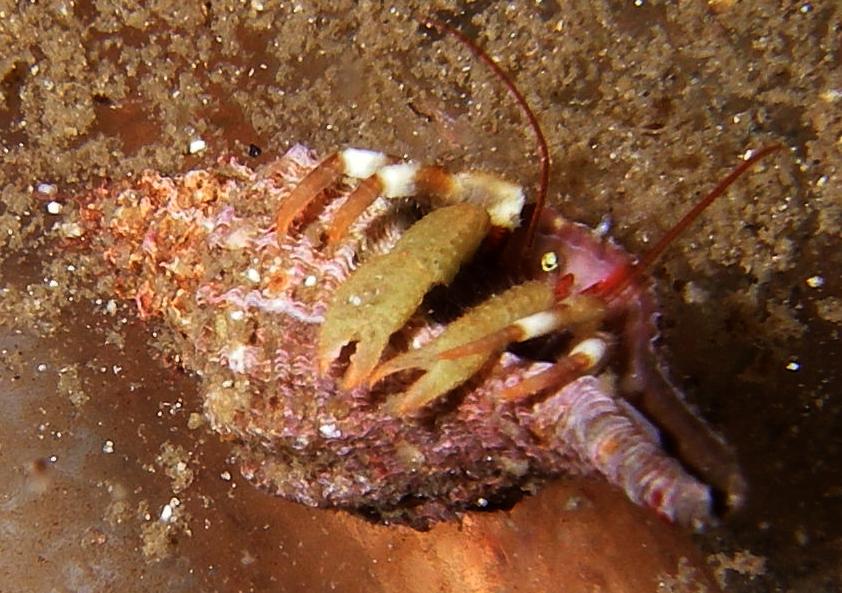Pagurus caurinus Hart, 1971Common name(s): Greenmark hermit |
|
| Synonyms: Pagurus setosus |  |
| Phylum Arthropoda
Subphylum Crustacea Class Malacostraca Subclass Eumalacostraca Superorder Eucarida Order Decapoda Suborder Pleocyemata Infraorder Anomura Superfamily Paguroidea Family Paguridae |
|
| Pagurus caurinus (underwater) | |
| (Photo by: Aaron Baldwin) | |
How to Distinguish from Similar Species: P. hirsutiusculus also has 1 prominent tubercle on the ventral surface of the merus of the right cheliped and white (or bluish) bands between the propodus and dactyl on legs 2-3 but the tubercle is often obscure plus the chelae have closely spaced tubercles & granules instead of spines. Its second antennae are green with white spots. Pagurus hemphilli has orange-red antenna 2 and no white band between the propodus and dactyl of legs 2-3.
Geographical Range: Port Gravina, Alaska to Los Angeles (rare in California)
Depth Range: Mostly subtidal to 126 m, occasionally intertidal in cold waters on outer coast.
Habitat: Rocky or sandy, exposed or sheltered
Biology/Natural
History: This species
is common in the Puget Sound region but most are so small they are
assumed
to be juveniles of other species such as P.
hirsutiusculus.
| Return to: | |||
| Main Page | Alphabetic Index | Systematic Index | Glossary |
References:
Dichotomous Keys:Coffin, 1952 (as P. setosus)
Hart, 1982
Kozloff 1987, 1996
Wicksten, 2009
General References:
Jensen,
1995
Scientific
Articles:
Web sites:
General Notes and Observations: Locations, abundances, unusual behaviors:
Authors and Editors of Page:
Dave Cowles (2006): Created original page